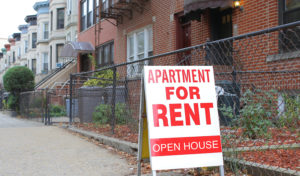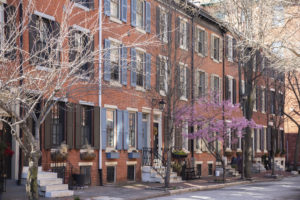
Voters in Alameda, California reject a ballot measure that would have eliminated single-family zoning citywide.
Front lawns and white picket fences may conjure the nostalgic, mid-century household from television shows such as Leave It to Beaver or The Dick Van Dyke Show. But for the voters of the small northern California city of Alameda, mid-century America is now.
On Election Day, approximately 60 percent of Alameda residents voted “no” on Measure Z, a ballot measure that would have effectively eliminated single-family zoning across the city. Single-family zoning is a form of land use regulation that restricts residential housing to detached, single-family homes and prohibits the construction of multi-family housing such as apartments and condominiums. As much as 80 percent of residential land in major cities including Los Angeles and Seattle is zoned exclusively for single-family houses.
Although zoning is generally the exclusive domain of local governments, the issue has recently come into the national spotlight. President Donald J. Trump made it a centerpiece of his reelection campaign, vowing to “protect America’s suburbs” by defending single-family zoning from efforts to dismantle it.
Moreover, the vote in Alameda follows a national wave of cities and states that have reconsidered whether to preserve this restrictive form of land use regulation in their jurisdiction.
The city of Minneapolis voted in 2018 to allow residential buildings of up to three dwelling units to be constructed as of right on all residential parcels across the city. The state of Oregon enacted a similar law several months later.
But not every jurisdiction that has considered whether to eliminate single-family zoning has chosen to do so.
California made two separate attempts to eliminate single-family zoning in the state, both of which failed. Virginia rejected a comparable bill just this year.
Alameda is thus only the latest in a recent string of jurisdictions that have contemplated but ultimately thrown out efforts to reform residential land use. These efforts reflect an ongoing push by scholars and urban planners to liberalize what they argue is an overly restrictive land use system in American cities and towns.
One such group of scholars at the UCLA Luskin School of Public Affairs recently advocated abolishing single-family zoning outright. In their article, Michael Manville, Paavo Monkkonen, and Michael Lens contend that by mandating that urban land be divided into large parcels that house small numbers of residents, single-family zoning is a highly inefficient means of distributing land that is increasingly in short supply. This inefficiency results in fewer housing opportunities for lower and middle-income residents, who are better served by more modest housing options such as apartments or duplexes.
Others have shown that restrictive zoning laws have stifled U.S. gross domestic product by adding to the cost of living for workers in large urban cities. Economists Chang-Tai Hsieh and Enrico Moretti report that loosening zoning constraints in metropolitan areas can result in increases of as much as $9,000 per year in worker salaries and over $1 trillion per year in U.S. gross domestic product.
Most importantly, Manville, Monkkonen, and Lens explain that ending single-family zoning would not mean that property owners are prohibited from building or preserving single-family homes on their property if they so desire. It simply would give property owners and developers who wish to build denser housing the freedom to do so.
This flexibility is key to addressing the concerns of those who prefer single-family homes to denser housing for reasons related to quality of life, retirement planning, or even aesthetics.
A 2019 survey conducted by online real estate brokerage Redfin showed that 89 percent of homebuyers prefer suburban, single-family houses to smaller units such as condominiums or triplexes. The outbreak of the coronavirus pandemic has only accentuated this preference, as individuals and families have come to view the suburbs as refuge from a disease that has laid waste to dense metropolitan areas.
Many single-family homeowners have also come to view the construction of multi-family housing as a financial threat that drives down the value of neighboring properties. Although studies have produced mixed results as to whether such fears are warranted, the view is pervasive especially among single-family homeowners whose net worth is directly tied to their homes.
Finally, others argue that for many Americans, single-family houses are important emblems of the country’s cultural heritage of homeownership. Urban policy scholars Joel Kotkin and Wendell Cox write that the housing boom following World War II offered many a pathway to wealth creation and came to symbolize the American Dream itself.
Advocates of Alameda’s failed Measure Z, such as Mayor Marilyn Ezzy Ashcraft, tend to argue that that American Dream has been hampered, not supported, by the imposition of restrictive zoning rules. They stress that limiting the city’s housing stock to large, cost-prohibitive homes has “denied the dream of homeownership” to many residents, most notably including those who historically have been subject to discrimination.
But until proponents of ending single-family zoning can successfully convince homeowners that reforms such as Measure Z will not spell the end of suburbia as they know it, it is likely that Measure Z will not be the last such ballot measure to be defeated.



